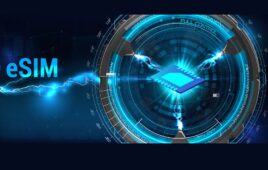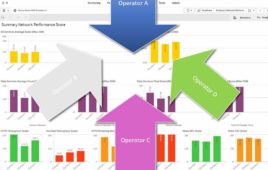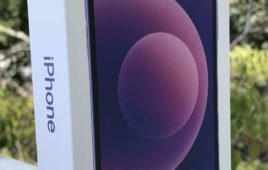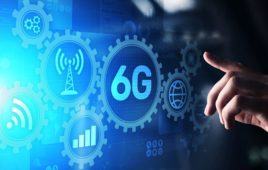AT&T filed a 174-page, heavily redacted document with the FCC yesterday outlining the case for its acquisition of T-Mobile USA, marking the official start of the agency’s review of the massive merger.
AT&T must prove that the $39 billion deal is in the public interest to get regulatory approval for the acquisition. In a public interest statement filed Thursday, AT&T claims that the transaction will “preserve and promote competition.”
“By freeing the applicants from their output-suppressing capacity constraints, this transaction will leave the marketplace more dynamic and competitive than before, and the beneficiaries will be American consumers,” AT&T said.
AT&T says its acquisition of T-Mobile is the most efficient way for it to address rising demand for mobile data, which is straining the capacity of AT&T’s network.
If regulators approve the deal, AT&T will become the largest wireless operator in the country, leaving Sprint in a distant third place behind Verizon Wireless. The merger will leave AT&T and Verizon with a combined market share of nearly 80 percent, giving them a near-duopoly hold on the U.S. wireless market.
Sprint, the Rural Cellular Association, the Rural Telecommunications Group are opposed to the deal, alleging it will stifle competition, and want the FCC and Justice Department to block the acquisition on anticompetitive grounds. The merger has also prompted outcry from consumer advocacy groups including Free Press, Consumers Union and Public Knowledge.
Sprint government affairs executive Vonya McCann said in a statement that the combined market share of AT&T and Verizon would have a chilling effect on competition and innovation in the U.S. wireless industry.
“This kind of leverage could strangle competition and give AT&T the power to increase price, threaten innovation critical to this industry and eliminate American jobs,” McCann said. “This proposed takeover cannot be fixed with conditions or divestitures.”
The merger would allow AT&T to use T-Mobile’s spectrum, freeing up capacity in both metropolitan and rural areas as it works to address a dramatic rise in mobile data traffic. AT&T says the volume of mobile data traffic coursing over its network had an 80-fold increase between 2007 and 2010 as its customers, particularly iPhone users, began to use their smartphones for everything from checking e-mail to stream video.
The merger will also increase AT&T’s cell density, effectively doubling the amount of traffic that can be carried using the two companies’ existing spectrum. It could take as little as nine months for AT&T to integrate its network with T-Mobile’s, since the companies both use GSM/HSPA.
The addition of T-Mobile’s network and spectrum assets will also allow AT&T to expand its LTE network to additional areas of the country, the company said. If the merger is approved, AT&T will be able to deploy its LTE network to 97.3 percent of the U.S. population, from its previous commitment of 95 percent.
AT&T has received support for its acquisition of T-Mobile from the NAACP and the Communications Workers of America. AT&T is also attempting to link the merger with the Obama administration’s ongoing efforts to expand access to high-speed broadband access, saying its planned LTE deployment will “help fulfill this Administration’s pledge to connect every part of America to the digital age,” particularly in small towns and rural areas.
Now that AT&T has filed its public interest statement and application for transfer of T-Mobile’s spectrum licenses with the FCC, the agency will review the filing to make sure it’s complete, then issue a public notice seeking comment on the document. AT&T has already filed documents with the Justice Department, which will review the deal for its effect on competition.
Regulatory review of the deal is expected to take about a year, according to AT&T’s estimates, but Strategy Analytics predicts the deal could take more than 18 months to close.




